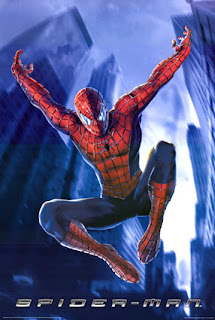Character Profile
The name of my character is Alexander. He is also known as Alexander the Coolest. Alexander is an arrogant, a show-it-all type of guy who wants to impress people by showing of his looks and talents. Despite his arrogant personality, he has a soft heart. He cares for the people around him.
Story Line
Magicians around the world have been practicing their magic skills at teenage age. Since young, they felt that magic was something impressive which could bring joy and fun to the audiences. Magic is not an easy task to perform. People need to have the interest of learning how to perform magic and also patience in order to succeed. Alexander is one of the many magicians who practiced hard everyday. He does not give up easily since he hopes to be the world's top magician. He performs hard on stage to amaze the audiences. Although he does make mistakes, the audience still applauded for him.
Driving Force (What motivates them?)
Alexander loves to see the people around him feel happy. He does not like people to feel bad about themselves therefore he practices magic tricks to show them that he could be the one to make them happy.
Traits that are unique to my character
Appearance:
- Alexander's key feature is his black and white outfit. He wants to impress people by looking good while doing magic. Most of the time his black and white outfit is the main thing that attracts people's attention because it makes him look cool and smart.
- Another feature is his long black hair, to show that he himself is cool looking magician by having this hair style. Everyday, he looks at the mirror to see if his hair is perfect.
- Another feature is his dark brown eyes. His eyes are quite scary looking but it does not scare people off easily.
Behaviour:
- Although Alexander appears to be arrogant, he treats people politely and even smiles at them.
- Whenever Alexander tries to do tricky magic tricks, he feels stress because he is afraid that the trick might not work properly when he is on stage.
Dialogue Sequence
Alexander: Abracadabra!
(The rabbit in the cage has disappeared.)
Where's the rabbit? Can you see where is it?
(Alexander asked the audience.)
Now, I need a volunteer to come up stage.
Audience: Me, me!! Pick me!!
Alexander: The little girl over there! Come up here!
(The little girl ran to the stage feeling excited.)
Now I'm going to cover the cage with a piece of cloth. When I count to 3, I want you to say "Abracadabra!". 1, 2, 3...
Little Girl: Abracadabra!
(Alexander slowly took off the cloth and, the rabbit appeared again. The little girl's reaction was shocked.)
LOOK! The rabbit's back in the cage!
Alexander: You did it! Well done my friend! Here's a little souvenir for you. You may now proceed back to your seat. (Little girl walked back to her seat.)
www.google.com
Lineage
My character Alexander is a magician while the character that I found on Google does not do magic. Alexander likes to wear a black and white outfit most of the time because it makes him look smart and cool. He gets stressed when his magic trick does not work. When he is really tired from practicing hard, he tends to sit on the floor and sleep. Alexander is not a guy who is violent. In comparison to the character from Google, the guy is not a magician. He likes to wear a red coat and brown pants because he wants to be simple but cool looking. Most of the time, he does not like to wear his coat because he thinks he is cool looking when he shows off his body. He gets very excited whenever he sees food. He tends to be a little bit violent if someone tries to make fun of him.




















































